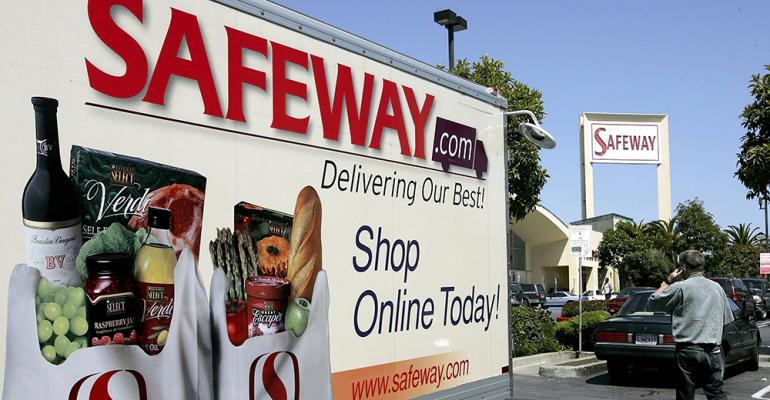Amazon is an e-commerce behemoth that sells more than just books and electronics—the company is increasingly prominent in the food business. Amazon Go, AmazonFresh and AmazonFresh Pick-up are a just a few of its offerings. If Amazon can diversify into the $600 billion food retail market with little experience and still compete, then certainly food retailers can adopt some of what has allowed e-commerce leaders such as Amazon to flourish.
What is this characteristic? It is a laser focus on last-mile delivery. As e-commerce grows in popularity, grocery stores and food delivery services can become more competitive by strengthening their delivery model.
We can divide delivery models into two categories: scheduled and on-demand.
The scheduled delivery model includes:
● Choosing items from the online selection of a store’s website
● Selecting specific time windows for the items to be delivered
● Limited options for same-day delivery
This model has been popularized in recent years by brick-and-mortar grocery stores such as the national supermarket chain Safeway. The positive is that this model represents a push in the right direction of digitizing the shopping experience. The negative is that the service lacks an “Uberized” experience with quick, transparent delivery.
The on-demand delivery model is similar to the scheduled delivery model, but with one exception: Same-day delivery is a consistent choice and the selling point of the company’s service.
This model has been popularized by food delivery startups such as Instacart, currently a partner with Whole Foods, Target and Costco. The positive is fast, same-day service, driver tracking and fresher perishable goods, while the negative can be a higher price point.
Taking its cue from e-commerce, food retail is beginning to adopt faster, more transparent service by capitalizing on the benefits of a strong focus on last-mile delivery.
According to Nielsen in a survey of respondents with online access in 60 countries, one in four people shop for groceries online and more than half are willing to shop online for groceries in coming years (55%). As the number of online shoppers continues to grow, grocery stores must take action and solidify on-demand e-commerce capabilities.
Here are three ways that food retailers can work to this end:
● Work with a third-party logistics partner to save money upfront. Working with a third-party outsourced delivery service could save time and money up front and provide additional flexibility to test new markets. Outsourced delivery services also work beautifully during peak times (i.e. holidays) when an in-store fleet is working at capacity. Long term, though, it's more cost-effective (and a better customer experience) to use an in-house fleet.
● Develop your own fleet of carriers. Sometimes a store will want to brand its company and service, and building a delivery workforce can achieve this goal. An in-store delivery fleet adds another layer to a company’s service, especially if the company can develop a reputation for having professional drivers who deliver quickly and are responsive to customer calls.
● Use a cloud-based logistics platform. Food retailers and e-tailers can make their delivery service more efficient by adopting logistics technology that can track drivers, provide comprehensive data analytics and utilize automatic notifications along the delivery route. Added benefits include improved customer satisfaction and reduced support burden.
Essentially, in the way Amazon has been unafraid to diversify and enter the $600 billion food retail market, grocery stores must also take what has made e-commerce successful and use it to their advantage.
With the progression of time, it will be the food retailers and food delivery startups who pay meticulous attention to details of the last mile that will ultimately survive and thrive.
Khaled Naim is the co-Founder and CEO of Onfleet, a company that makes it easy for businesses to manage and analyze their local delivery operations. Onfleet software manages complex last-mile logistics and gives consumers the ability to track deliveries right to their door. With intuitive iOS and Android apps for drivers, a powerful web dashboard for managers and seamless communications and real-time tracking for customers, Onfleet has powered millions of deliveries for hundreds of companies around the world in the surging on-demand economy, including HelloFresh (food), Boxbee (storage), Lugg (furniture), Meadow (medical cannabis) and UrbanStems (flowers), to name a few. Onfleet is available in English, Spanish and French, and has clients in more than 50 countries. Khaled can be reached via email at [email protected] or connect with him on LinkedIn or Twitter.





